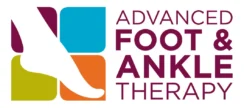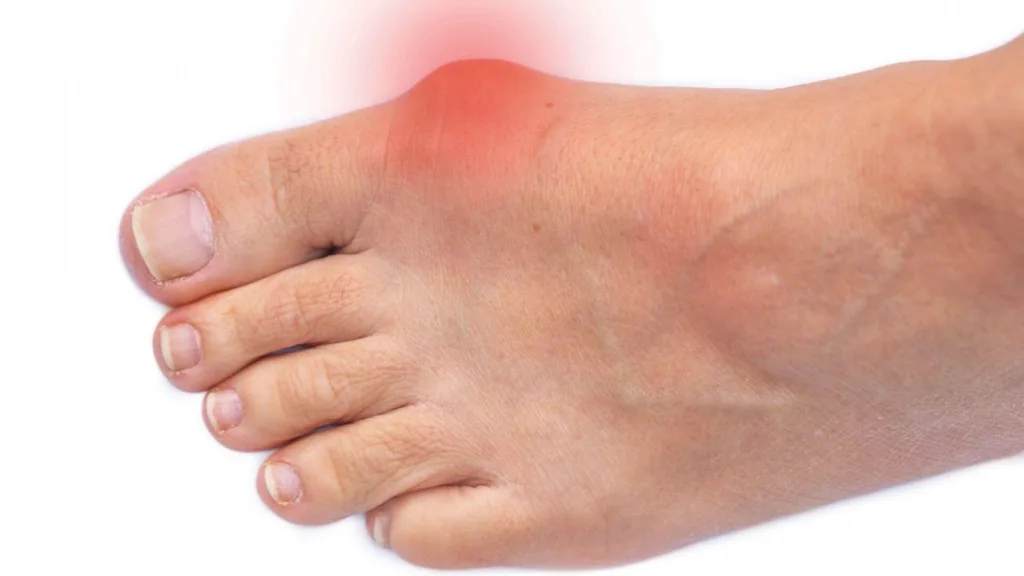Targeted manual therapy can relieve bunion pain and even avoid the need for surgery.
Having managed my own bunions, otherwise known as hallux valgus deformity, for many years, I was able to relieve pain, maintain joint mobility with specific soft tissue massage, stretching, and an understanding what features to look for in a shoe.
Referred pain from irritable trigger points in tight muscles.
Two muscles which can cause pain in people with hallux valgus are the adductor hallucis and flexor hallucis brevis muscles under the foot. The adductor hallucis muscle, which is in the shape of the number seven, pulls the big toe towards the second toe. The adductor hallucis has transverse and oblique heads attaching to a common insertion at the lateral sesamoid bone and base of the proximal phalanx and joint capsule. The oblique head attaches to the bases of the 2nd to 4th metatarsals. The Flexor hallucis brevis muscle flexes the great toe and attaches to the cuboid bone in the middle of the foot and the base of the big toe. The two small weight-bearing sesamoid bones sit within the tendons of the two heads of this muscle. The crosses in the diagrams below indicate the myofascial trigger points, which are nerve endings in the muscle that can become painful and refer pain to the areas shaded in red. (Reproduced with permission from Travell & Simons’ Myofascial Pain and Dysfunction: The Trigger Point Manual, Volume 2, Wolters Kluwer/Lippincott Williams and Wilkins, 1999)

To release tension and decrease pain from these muscles, you first need to deactivate the trigger points before performing specific soft tissue massage along the entire muscle, including its attachment points into the bones. To locate the muscles and their trigger points, feel along the muscles for a taut band to identify the tender trigger points. It’s helpful to mark the trigger points with a biro or skin marking pen so you can retest them accurately. I use the Handy Pulse low-level laser (www.pulselaserrelief.com.au) to deactivate the trigger points quickly and painlessly. DO NOT use acupuncture or dry needling in the sole due to the extensive network of nerves and blood vessels, and it can be excessively painful.
I also teach my clients how to self-treat and deactivate their trigger points using a technique I call muscle meditation.

This exercise is sometimes referred to as “foot shortening” and activates the small muscles in the foot that support the arches, and straighten the toes whilst lifting the metatarsal heads. These muscles can be thought of as the core muscles of the foot.
As this movement can be difficult to perform initially, trying it with the hand on your knee can help you understand the movement required.
Wearing Correct Toes can help you avoid clawing your foot during the exercise.
https://www.naturalfoothealth.com.au/correct-toes.html
- Sit in a chair with your feet flat on the ground
- Hand action: press your fingertips into your thigh. Whilst keeping your fingers straight, raise your knuckles away from the thigh. Think of dragging your straight fingers back towards your wrist. Once you have mastered this movement try it with your foot.
- Foot: Press the tips of your toes into the floor. Whilst keeping your toes straight, raise your toe knuckles (metatarsal heads) upwards off the floor. Avoid clawing or curling your toes. Once you have achieved performing this movement repeat x 5 and hold for 10 seconds.
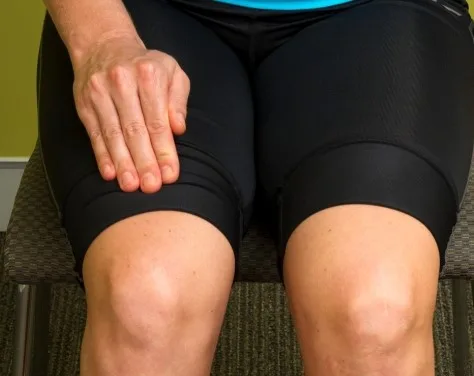

Muscle Meditation
- Find tender spot in muscle
- Touch painful point with index finger
- Ensure only one point of contact with skin
- Reduce pressure so there is no pain
- Deep breath in
- As you breathe out, think about relaxing the muscle just under your finger
- Repeat twice for each point.
- Without moving the finger retest the spot for pain.
Once all the trigger points have been deactivated you can release the insertion points of the muscles and joint capsules with a little massage cream such as skin repair. It takes about 2 minutes to ease tenderness at each attachment point and massage along the length of the muscle. It is good to pull the big toe away from the second to as you do this.
Big toe joint compression and stiffness
Test how far you can pull the big toe away from the second toe and note any pain or stiffness. Test for tenderness along the lateral side of the first metatarsophalangeal joint. If this is tender, massage gently along it towards the end of the toe, pulling the big toe away from the second toe as you do this until the discomfort eases. Retest the movement for pain or stiffness.

Maintaining mobility
You can help maintain the spaces between your toes by wearing some toe spreaders such as Correct Toes or Flamingo Feet. The advantage of these toe spreaders is that they stretch the transverse head of the adductor hallucis muscle whilst keeping the toes in the correct alignment. This is important to avoid compression on the nerves between the metatarsal heads which can lead to painful neuromas. These devices are designed to walk in and work well with grip socks, adjustable slides or Lems shoes which have a wide forefoot that allow your foot to move.

Left: Correct Toes – Middle: Flamingo Feet – Right: Lems Shoes

ADBUCTOR HALLUCIS STRENGTHENING
Bursitis
A bursa is a fluid filled sack that protects bony prominences from friction and pressure. Inflammation of the bursa is referred to as bursitis and occurs if the bursa is subjected to increased compression and friction for some time.
The bursa on the medial side of the bunion can become inflamed if the shoe is too tight across the forefoot. When this occurs, the bursa becomes painful, red, and swollen, and any pressure from a shoe will irritate it.
To settle a bursitis, advise wearing secure slides, thongs or sandals that don’t touch the bursa. To reduce inflammation and swelling, advise using a topical application of anti-inflammatory gel such as Voltaren Gel to reduce the inflammation, combined with Hirudoid cream to reduce swelling, under a sealed plastic dressing, for five consecutive nights. As these creams get into the bloodstream and may cause allergic reactions, warn your client to check with their pharmacist before use.
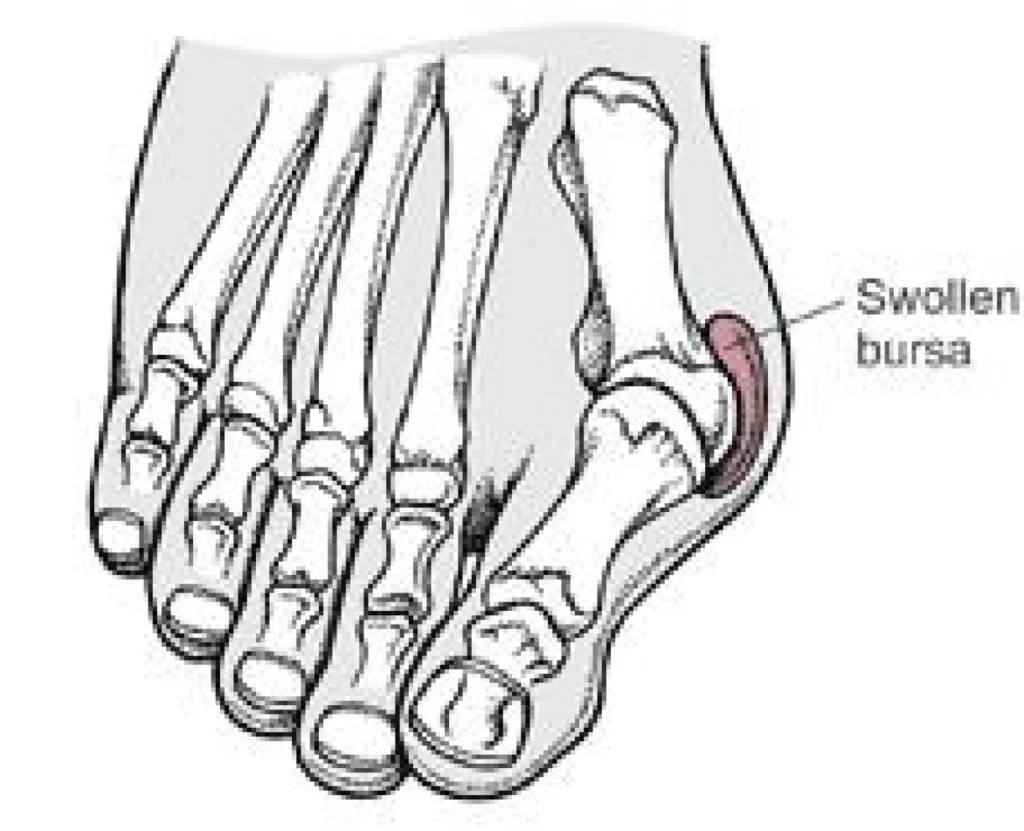
Footwear advice
To avoid bursitis, it’s important to choose shoes that are wide in the forefoot and stretch easily with a low to medium heel height.
Avoid shoes with:
- stitching across or near the bunion.
- patent leather or vinyl shoes that don’t stretch.
- high-heels that increase the loading of the forefoot.
- straps that cut across the bunion.
Ideal shoe materials are suede, elasticised or soft fabrics. Look for sandals with width adjustment and wide-fit brands such as Gabor or Paul Green
To test the width of the shoe, pull the liner out and stand on it. If you can’t see the edge of the liner, the shoe may be too narrow.

Ara for wide fit, suede and soft leathers

Left: Sketches – Middle and Right: Vivaia, wide forefoot, cushioning with stretch fabric.

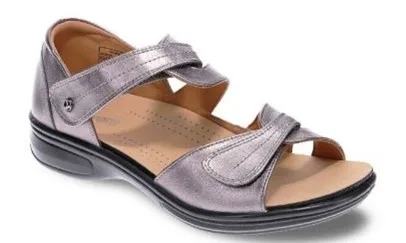

Mephisto left
Revere middle Gabore suede mule
Gabore suede mule
